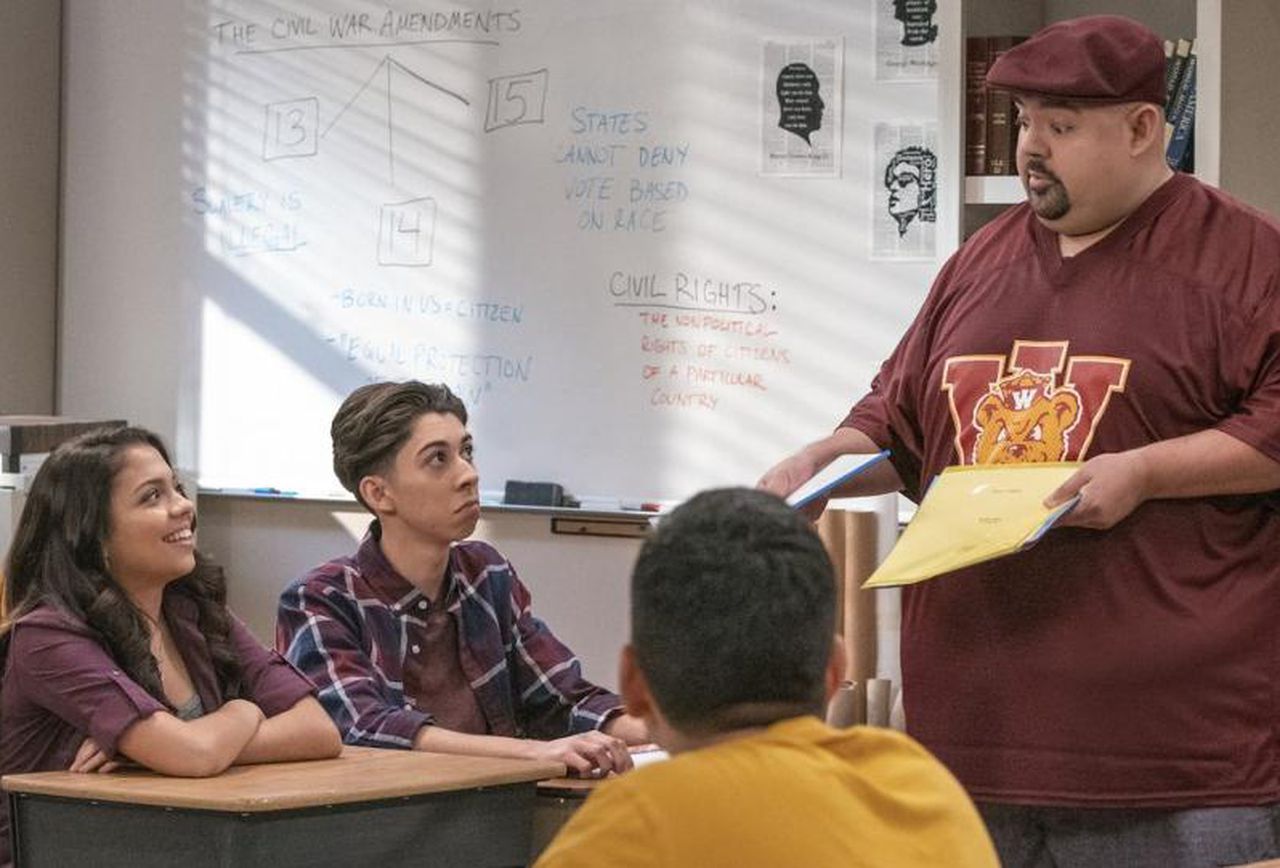Netflix’s new comedy starring comedian Gabriel “Fluffy” Iglesias combats issues that are often represented by the media. Mr. Iglesias teaches at the high school he once attended in Long Beach; he is the cool teacher in school, but the show isn’t afraid to feature a variety of educators with different ideas.
Although the show sometimes feels heavy-handed in its portrayal of educational issues, it highlights their complexity. “Mr. Iglesias” brings attention to the many challenges that educators encounter.
“Mr. Iglesias” doesn’t fall into the trap of oversimplifying issues because it focuses on the problems that traditionally affect underrepresented and under-resourced school districts. The main character is a teacher, but the perspectives of his students are heard throughout the show’s storyline.
At times, the main character struggles to make the right choices and put his students first. Iglesias tries to do his best, and viewers watch him grow as a character. Other Hollywood representations of teachers seem to have perfectly formed visions of selfless teachers who never make mistakes.
“Mr. Iglesias” discusses the challenges that make an educational journey difficult for many American students. Mr. Iglesias’ classroom is full of students who are working multiple jobs, struggling with absent parents, facing the challenges of poverty or taking care of their siblings.
The Netflix original helps raise awareness about how a student’s home life affects their studies. Although it is easy to note these challenges on a school report card or news article, it is so much more jarring to see detailed narratives about students who face these difficulties.
For example, one of Mr. Iglesias’ students, Marisol, has to work three jobs to help keep her family afloat. Although she is brilliant, the amount of hours she needs to work affects her performance in the classroom. When she is beginning to look at colleges, her family’s finances come into play again.
In an effort to meet new standards and claim elite status among educational institutions, many schools have started a process of “counseling out” struggling students. Rather than helping students who are struggling and providing extra support, educators encourage them to stop attending school. This boosts the statistics of struggling schools but does nothing to solve the issues that students are facing. An cartoonishly evil administrator in the show issues these “counseling out” letters, but the character does, in fact, represent real people in education.
Administrators often aren’t straightforward about why they are counseling students out because their true motivation is about boosting test scores and ratings. The show is able to combat such real issues because their adversaries are honest about the situations at hand.
Mr. Iglesias’ students have to deal with new security measures at school, such as students being required to use clear backpacks. Marisol and her classmates immediately notice the presumption of guilt that this places on students as well as the invasion of their privacy.
Upset by these new rules, Mr. Iglesias reminds students they have the right to speak up against the administration. Since the landmark student free speech case, Tinker v. Des Moines, the government has acknowledged the role of student expression and speech in the classroom. Using their knowledge of history, the students begin a formal protest outside Principal Madison’s office.
The most important part of the show, however, is who Mr. Iglesias really is. As a student who grew up in the community, went to Woodrow Wilson High and has previously lived the life of these students, he understands the challenges they face. The show does an amazing job of combating the “white savior” stereotype that often plagues Hollywood representations of education.
For example, fellow teacher Abby Spencer is a quality educator, but she often lacks the contextual knowledge to understand her students. Mr. Iglesias and the other teachers who have been part of the community for years help her understand the lives of her students and support her as an educator.
The show also demonstrates the complexity of a teacher’s job. Not only do teachers have to be prepared in the material they are teaching and the newest educational techniques, they need to be ready to empathize with students’ unique home situations and complex identities.
“Mr. Iglesias” features a variety of hardworking and excellent teachers, but the show’s creators aren’t afraid to acknowledge other types of teachers, like Mr. Iglesias’ best friend, Tony Ochoa.
As someone who doesn’t forge relationships with his students and does the minimum of what is required, teachers like Mr. Ochoa are often considered the problem in the educational system. Even though his actions are often an issue, Mr. Ochoa is able to grow throughout the show. However misguided, this character learns from his mistakes and grows as an educator.
Principal Madison, Woodrow Wilson High’s head administrator, also has problematic values and goals. In her pursuit of leading an Elite 100 school, she often forgets the cost of her actions. By not putting the students first, Principal Madison often makes decisions that benefit her directly. Although few educators can match her selfish nature, the character unfortunately represents the mindset of some educational leaders within society.
However, the show doesn’t acknowledge that, unlike most ill-intentioned real world educators, these characters are candid about their nefarious motives.
Overall, “Mr. Iglesias” highlights important educational issues and helps viewers to see education through a new lens. Though, at times, the characters might seem over the top and unrealistic, this is a comedy show at heart. Viewers are supposed to laugh at the characters and have fun while watching each episode, while still learning important lessons.















